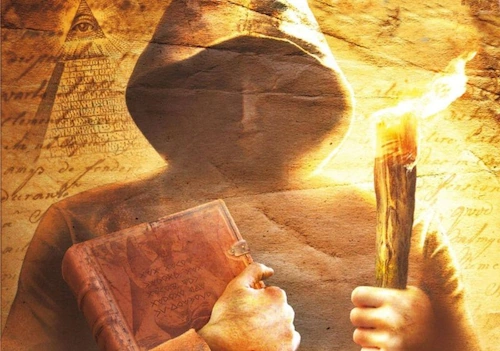
Introduction: Connecting With the Afterlife
The age-old desire to communicate with the deceased is a hallmark of the human condition, reflecting profound existential questions about life, death, and what lies beyond. This article aims to delve deeply into the intricate history of spirit communication, exploring philosophical and spiritual dimensions, cultural practices, motivations driving individuals to seek connections with the dead, and the inherent risks associated with these endeavors.
Historical Context of Communicating With the Dead
Ancestral Worship: The Dawn of Belief Systems
The practice of establishing communication with the deceased can be traced back to the earliest periods of human history, when the concepts of animism and ancestral veneration shaped the spiritual environment. In prehistoric societies, the belief that the souls of ancestors would influence the living world underpinned ritualistic practices designed to honor and appease the deceased. Archaeological evidence from burial sites, such as the elaborate graves of the Neolithic era, reveals that grave goods—including pottery, tools, and ornaments—were often included in burials as offerings for the journey into the afterlife.
This connection with ancestors was pivotal for maintaining social cohesion and cultural identity. The Sumerians, known for their complex pantheon and mythologies, believed in an afterlife where the souls entered the “Land of No Return”. Ritualistic practices involved offerings made to deities and ancestors to secure protection and favor, with priests acting as mediators between the living and the divine. This foundational belief laid the groundwork for a profound cultural understanding that death is not merely an end but the beginning of a new interaction between the living and the deceased.
Ancient Egypt: Cosmologies of the Afterlife
In ancient Egypt, the quest for mastering the art of dying and communicating with the dead took extraordinary forms, leading to the development of a comprehensive funerary culture. The Egyptians cultivated an elaborate belief system where the soul was viewed as eternal and capable of traversing the afterlife as well as returning. The “Book of the Dead”, a collection of spells and funeral texts, served as a guide for the dead during their journey through the underworld, emphasizing the importance of proper burial rites.
The mummification process itself showcases an acute awareness of preserving the body for the soul’s return. The belief that the heart, considered the seat of the soul, would be weighed against feather of Ma’at (truth and justice) during judgment reveals profound philosophical dimensions. Those deemed worthy would enter the Field of Reeds, a paradise that mirrors their earthly existence. The intricate rituals performed by priests, including recitations from the “Book of the Dead”, served as communicative acts aimed at ensuring a favorable outcome in the afterlife.
When funerary rituals were performed, family members often engaged with the deceased by leaving offerings such as food, drink, and personal items to sustain their loved ones in the afterlife. This practice illustrates a cultural reverence for the dead that persisted over millennia, shaping not only individual beliefs but societal structures around death and the connections maintained with deceased ancestors.
The Birth of Spiritualism and the 19th Century Renaissance
The 19th century marked a significant resurgence of interest in communicating with the dead, largely due to the rise of the Spiritualist movement. This movement burgeoned during a period marked by turmoil—wars, widespread mortality, and the socio-economic upheaval of the Industrial Revolution. The discourse on life and death became increasingly relevant, prompting individuals to seek solace in the idea of an afterlife.
At the forefront of this movement were the Fox sisters, who, in 1848, claimed to have established contact with a spirit through rap noises in their home. Their public demonstrations of purported communication rapidly captured the imagination of a nation still grappling with grief from the Civil War and other losses. This pivotal moment instigated a broader societal fascination with the invisible world, leading to the proliferation of séances, public demonstrations of mediumship, and the establishment of Spiritualist churches.
Allan Kardec, a French educator and the foundational figure of modern Spiritualism, published “The Spirits’ Book” in 1857. His work posited that “spirits are the intelligent beings of creation“, thus ascribing an organized structure to the spiritual realm, suggesting that higher spirits could guide the living toward ethical and intellectual enlightenment. Kardec’s systematic approach to spirit communication set the stage for future inquiries into the nature of consciousness and reality.
The Spiritualist movement allowed for a democratization of the mystical, giving rise to a layman’s interest in the afterlife, where individuals from all walks of life sought to connect with spirits without necessarily soliciting guidance from established religious authorities. This burgeoning curiosity reflected a profound yearning to understand mortality, prompting a reexamination of both religious and cultural traditions surrounding death.
Early 20th Century Developments: Theosophy and Beyond
The early 20th century saw the emergence of organizations like the Theosophical Society, founded by Helena Petrovna Blavatsky and others, which sought to explore spiritual truths and establish connections with the spiritual realm. Theosophy incorporated elements of Eastern religious philosophies, such as karma and reincarnation, presenting a holistic understanding of existence and the interconnectedness of life.
These new spiritual movements contributed to a diversification of beliefs surrounding death and communication. Literature, including works such as “The Afterlife” by Theosophist William Quan Judge, explored the possibility of contact with the deceased and contributed to a growing audience fascinated by the interplay between life and what lies beyond. This time period also saw the formation of mediumship schools aimed at teaching individuals the skills needed to communicate with the dead, further legitimizing these practices in the eyes of the public.
Moreover, the scientific community began to engage with the spiritualist phenomena. Psychical research societies formed across Europe and North America, conducting investigations into mediumship, paranormal activities, and out-of-body experiences. This interplay between science and spirituality fostered a culture of acceptance toward discussing the afterlife openly.
Philosophical and Spiritual Dimensions
The Existential Inquiry Into Life and Death
Engaging with the dead invites profound existential inquiries regarding consciousness, existence, and what it means to be human. The search for connection with the deceased is frequently driven by the human desire to understand the nature of death and the possibility of an afterlife. Philosophers such as Søren Kierkegaard and Martin Heidegger assert that confronting one’s mortality can yield a deeper appreciation for life itself.
Kierkegaard, in his works, argues for the importance of embracing the “leap of faith” amid uncertainty. He suggests that grappling with the notion of death forces individuals to acknowledge their own existence and make meaning of their lives. In this sense, seeking to commune with the dead is both an act of defiance against mortality and a search for meaning that transcends individual lifetimes. He famously stated: <<The more we are aware of our own mortality, the more we seek to connect with that which endures>>.
Martin Heidegger’s concept of “Being-toward-death” suggests that the awareness of death compels individuals to live authentically. Such a perspective challenges the societal tendencies to distance oneself from discussions about death. Individuals who engage in communication with the dead often seek closure and understanding that contributes to their own existential journeys.
Moreover, this theme is echoed in Eastern philosophies like Buddhism, where aversion to death is seen as a form of ignorance. The concept of impermanence (anicca) reinforces the Buddhist understanding of life and death as interconnected, where recognizing the cyclical nature of existence invites profound spiritual growth. In this light, communication with the deceased becomes a practice that deepens existential awareness and spiritual insight.
Cultural Interpretations and Ritual Practices
Globally, there exist myriad interpretations and rituals concerning communication with the dead, each uniquely crafted by historical narratives and spiritual beliefs. Cross-cultural studies into funerary rites reveal the diverse ways in which societies relate to death, memory, and the afterlife.
In traditional Chinese culture, ancestor veneration is deeply ingrained. The Qingming Festival, or Tomb-Sweeping Day, serves as an occasion for families to honor their ancestors by visiting graves, cleaning tombstones, and offering food. They believe that the spirits bless their descendants in return for these observances. The rituals reinforce familial connections across generations, signifying that death does not sever bonds but transforms them into a spiritual legacy.
Conversely, in many Indigenous cultures, the connection to the deceased is integral for maintaining cultural identity. For instance, in the Māori context of New Zealand, ancestors (tūpuna) are revered, and their guidance is sought through ceremonial practices that invoke their spirits in teachings and decision-making. The Māori belief system embodies the idea that ancestral spirits remain actively involved in their descendants’ lives, providing insight and guidance through shared experiences.
The celebration of Día de los Muertos (Day of the Dead) in Mexico is perhaps one of the most illustrative examples of cultural practices surrounding communication with the dead. Families craft altars adorned with photographs, food, and drinks for their departed loved ones, inviting them back for a reunion. This celebration conveys the idea that death is not an endpoint but an ongoing relationship characterized by love and remembrance.
Even in Western cultural contexts, literature and film often explore themes of spirit communication. Works such as “Ghost” featuring Patrick Swayze, and novels like “The Lovely Bones” by Alice Sebold, serve as narratives that open discussions about loss, love, and the possibility of continued existence after death. Such representations reflect a perennial human yearning for connection, addressing the complexity of relationships that endure beyond physical life.




